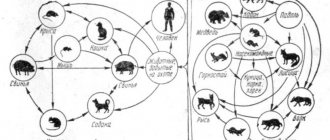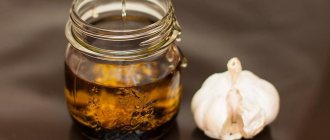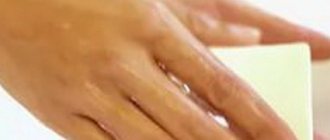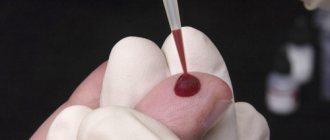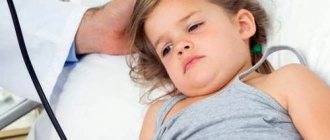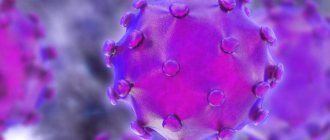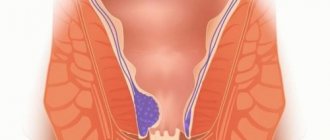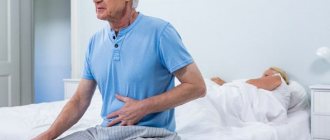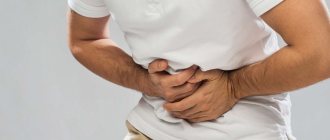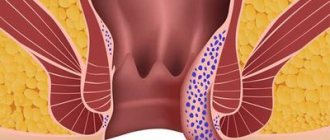A child learns about the world from the moment he begins to crawl on his own. His immune system has not yet been strengthened enough, but the baby can easily taste all unfamiliar objects. With such actions, not only harmful bacteria, but also parasites can penetrate into the unformed body. Most often these are pinworms - helminths that not only cause inconvenience, but can also cause serious illness. How to treat pinworms in children?
What are pinworms in children?
Infection with worms is often caused by eating unwashed fruits.
Enterobiasis is a disease caused by the appearance of pinworms in the small and large intestines of the body. Pinworms are also called worms. These parasites look like small white worms. They are small in size: females up to 1.5 cm, and males up to 5 mm. Their color is always white. The habitat in the human body is the intestines, but there are exceptions when they live in other organs. The female parasite reproduces quite quickly. Every day at night, she can lay eggs near the anus or in the folds of the skin. The affected areas may be the perineum.
During the process of the emergence of worm embryos, the child experiences severe itching as the infected area of the skin becomes vulnerable. Nematodes mature quite quickly and penetrate the intestine and attach themselves to the intestinal walls. After the female has laid eggs, she dies. Girls have a hard time coping with this disease. Worms, crawling out, can penetrate the mucous membrane of the external genitalia, causing additional infections. This does not mean that the disease does not need to be treated. During a short lifespan, a female can lay many eggs. The disease is gaining new momentum and the baby’s condition is worsening.
If no treatment is given, the parasite dies after 50 days.
Symptoms of the disease
There are many signs that a child is infected with pinworms. However, not all of them are characteristic of this disease. Therefore, children are often treated for colitis or gastritis. If there are few parasites in the body, then there may be no symptoms at all. If the disease continues for a long time, anemia occurs , the condition of nails, hair, skin worsens, and the corners of the mouth crack.
Enterobiasis has an incubation period of 1-1.5 months . The “brightness” of the clinical picture depends on the strength of the immune system and the number of worms.
There are two types of disease - acute and chronic. Everyone has their own symptoms.
Acute period
Most often, nausea, abdominal discomfort, weakness in the morning, and frequent stools occur, although they are well formed.
Chronic stage
From the moment of infection to the chronic stage, 1-2 months pass. Symptoms may remain the same as in the acute form or worsen. The main manifestations of chronic enterobiasis:
- flatulence;
- itching in the anus, which becomes stronger at night, it lasts 4-5 days, then disappears and appears again after 2-3 weeks;
- heaviness and pain in the epigastric region;
- insomnia;
- enuresis at night;
- irritability;
- increased fatigue;
- neurological symptoms - problems communicating with peers, deterioration of memory, attention, isolation, headache.
Ways of infection by pinworms
It is easy for a child to become infected with such a disease. He leads an active lifestyle, learning new things and playing with other children and animals. A baby can “catch” parasites in several ways:
- Oral. The child scratches the anus and parasite eggs get under the nails. Anything that the baby touches with his hands can be a site of infection.
- Bytovym. After contact with dirty toys, after eating dirty vegetables. This method is the most common. Pinworm larvae remain on the hands and, once they enter the oral cavity, they easily reach a favorable habitat.
- Contact. Favorite pets are the main breeding grounds for worms. Children love to play with them and often do not wash their hands after contact.
The most common cause is failure to maintain normal hygiene. Dirty hands, stale linen, close contact with mucous membranes have a beneficial effect on the appearance of enterobiasis. By teaching your child to be clean, you can protect him from many infections and helminth infections.
Features of taking anthelmintics
Before treating enterobiasis or any other type of helminthic infestation, it is necessary to conduct a diagnosis to determine the type of worm that has affected the body and the degree of infection. The tests performed show the state of the body and help the doctor select the optimal drug that will not only get rid of helminthic infestation, but will also cause the least toxic harm.
Self-medication can lead to the use of insufficient or excessive doses, severe intoxication and weakening of the patient’s body. It is worth remembering that all anthelmintic drugs have a number of contraindications and side effects. To avoid them, you must strictly follow all the instructions of your doctor. Diagnostics determines the condition of the body, the degree of its infection, and also helps the parasitologist choose the most effective remedy for getting rid of enterobiasis. Anthelmintic drugs are available in the form of:
Signs of pinworms in children
Maintaining personal hygiene - preventing enterobiasis
If a parent notices such symptoms in their child, this may serve as the appearance of “unwanted guests” in the young body:
- Itching in the anal area. This indicates that the female is already laying eggs. Most often, this symptom intensifies at night, when the body is at rest.
- Mechanical damage to the skin in the buttocks area. It is impossible to stop yourself from scratching the infected area. Babies can scratch their skin until it bleeds. This can cause additional complications in the form of infections and inflammation.
- Disorder of the gastrointestinal tract. This symptom indicates that the child has been sick for quite a long time and a large number of helminths live in his body.
- Nervous system disorder. Restless sleep, irritability, and headache can become symptoms of life activity in the intestines of worms.
- Vomiting, pale skin, nausea, fever, dizziness. These are symptoms of intoxication caused by the active work of pinworms. The waste that parasites produce is toxic and spreads throughout the body.
- Detection of mucus in stool. Mucus is the toxic waste of the parasite. It is released and enters the intestines. Detection of “white threads” in the stool. These are the very “worms”. If parents have not identified them in their child’s excrement, this does not mean that he is not sick. The female may not lay eggs every day.
These symptoms cause loss of appetite, resulting in weight loss. Toxic substances secreted by worms most affect the nervous system.
A sick child sleeps poorly, is irritable, pale, motionless, and refuses to eat.
Dekaris
Decaris - paralyzes the nervous system of pinworms.
Another name for Decaris is Levomisole. This drug was initially used as an immunomodulator, but as an anthelmintic it began to be used much less frequently.
The mechanism of action of Dekaris: the medicine paralyzes the nervous system of pinworms, which are excreted from the intestines within 24 hours. This medicine can be taken with caution during pregnancy, but it is completely unacceptable when breastfeeding a child, and when treating enterobiasis in children under 3 years of age.
The recommended dose is from 25 mg (1 tablet) in children to 50 mg (2 tablets) in older schoolchildren and adults. The tablets are taken in the evening, after dinner. They need to be washed down with a small amount of water.
In addition to the above contraindications, the drug should not be taken by patients with agranulocytosis; persons with renal or hepatic insufficiency should be used with caution. In case of overdose (600 mg and above), the following symptoms may appear:
- vomiting and nausea,
- headache,
- confusion,
- dizziness,
- convulsions.
Gastric lavage immediately after an overdose relieves most of the symptoms of poisoning.
It is highly not recommended to combine treatment of enterobiasis with Dekaris with alcohol intake.
Diagnosis of enterobiasis in children
Some believe that infection occurs from pets
If they detect signs of pinworms in their children, parents contact their pediatrician. He, in turn, can prescribe an examination himself, or send him for a consultation with a gastroenterologist and parasitologist. First of all, the specialist will conduct a survey, including basic questions to determine a possible diagnosis. Key questions will include:
- Main complaints
- First symptoms and when they appeared
- How many family members have similar symptoms?
- Does the family practice good hygiene?
The next step will be to assign research:
- Examination of feces. The laboratory takes a stool test for worm eggs. For the analysis to be reliable, it is necessary to take the biomass to the laboratory within an hour after defecation. It is necessary to prevent urine from coming into contact with feces. Analysis from different parts of the stool is collected in a disinfected container. 2 teaspoons are enough for an accurate diagnosis. If the basic rules are not followed, the result may be unreliable.
- Scraping in the anal area. The study is carried out in the morning. The patient should not go to the toilet before this and should not wash himself. The procedure is quite simple: a special film is applied to the skin area. Helminth eggs stick to it, which can be detected under a microscope.
- Blood tests. A general blood test is done. In the presence of enterobiasis, eosinophilia is detected - an increase in eosinophils in the blood. In rare cases, anemia is detected, a decrease in hemoglobin and red blood cells. This disease can be caused by a large number of helminths and a simultaneous infectious disease
If there are any signs of enterobiasis, it is recommended to immediately visit a doctor and undergo the necessary tests. Timely detection and treatment of the disease eliminates the development of complications.
Disease prevention
To prevent a child from becoming infected with parasites, he needs to instill personal hygiene skills and ensure that:
- his nails were trimmed;
- he had no contact with street animals;
- did not put dirty objects into his mouth. Source: Clinical recommendations (treatment protocol) for providing medical care to children with enterobiasis, Federal State Budgetary Institution Scientific Research Institute of Infectious Diseases, Federal Medical and Biological Agency of Russia, Public organization "Eurasian Society for Infectious Diseases", Public organization "Association of Infectious Disease Doctors of St. Petersburg and the Leningrad Region" (AVISPO)
If you suspect enterobiasis in a child, you should consult a doctor as soon as possible and undergo a course of treatment. You can make an appointment with a medical pediatrician 24 hours a day by phone or leave a request to have a doctor come to your home.
Sources:
- https://www.ncbi.nlm.nih.gov/pmc/articles/PMC2306321/JP Caldwell Pinworms (Enterobius Vermicularis) Can Fam Physician. 1982 Feb; 28: 306–309.
- R.A. Fayzullina, E.A. Samorodnova, V.M. Dobrokvashina Helminth infections in childhood // Practical Medicine, 3(42) May 2010.
- Clinical recommendations (treatment protocol) for the provision of medical care to children with enterobiasis FGBU NIIDI FMBA RUSSIA, Public organization "Eurasian Society for Infectious Diseases", Public organization "Association of Infectious Disease Doctors of St. Petersburg and the Leningrad Region" (AVISPO)
Markova Daria Olegovna Clinic
Author of the article
Markova Daria Olegovna
Specialty: pediatrician
Experience: 15 years
The information in this article is provided for reference purposes and does not replace advice from a qualified professional. Don't self-medicate! At the first signs of illness, you should consult a doctor.
Treatment of pinworms in children
This is what pinworms look like
It is not recommended to treat pinworms yourself. Parents should definitely seek advice from a doctor. After the examination, a professional will prescribe effective treatment that will help in recovery and will not cause additional harm to health. Experts recommend:
- Maintain hygiene rules for the whole family. Wash your hands before and after eating, and after visiting the toilet.
- Wash your face morning and evening.
- Wet cleaning.
- Bed linen must be clean and ironed. Heat treatment kills helminth eggs.
- Underwear should be changed every day. Wash in hot water and be sure to iron
The most common drugs for the treatment of helminths are:
- Vermox and Medamin. Medicines in tablet form. Prescribed for the whole family. Suitable for children from 2 years old. Has a paralyzing effect on parasites. Dead pinworms leave the body in the stool.
- Piperapzine. The doctor sets the dosage depending on the patient’s age. The medicine has an inhibitory effect on helminths. As a result, parasites cannot remain inside the intestines.
- Pirantel. The tablets actively cope with the disease, regardless of its development. The dosage varies depending on age.
- Pyrvinium pamoate. Suspension effective against pinworms. The drug blocks the work of certain enzymes that are necessary for the life of worms.
It is not recommended to self-medicate and set dosages. Medicines can either cure or harm or worsen the disease. Treatment should only be carried out under medical supervision. Recovery will occur after taking medication for a week. It is possible to prescribe a second course of treatment after 14 days.
Pirantel
Pyrantel is the most common drug for pinworms.
This drug is offered to consumers in dosage forms such as tablets, suspension, and chewable tablets. Its mechanism of action is that Pyrantel blocks the neuromuscular system of worms, after which they are freely removed from the intestines.
It acts on pinworms in all phases of their development, and, in addition to pinworms, the drug is effective against several types of worms. Pyrantel is taken once, it is best to do it after breakfast.
The effectiveness of the therapeutic dose depends on the weight of pinworm carriers - it is 10 mg per kg of body weight. In order to prevent self-infection, Pirantel should be repeated after 21 days, and all family members should be treated.
This drug has contraindications in the form of hypersensitivity to the components of the drug, and myasthenia gravis during the treatment period. Although Pirantel is used in pregnant women and infants up to 6 months, it is recommended to do so with caution. An overdose of Pyrantel is manifested by the following symptoms:
- vomit,
- nausea,
- diarrhea,
- increase in body temperature,
- skin rash, allergic urticaria,
- hallucinations,
- sleep disorders,
- headache.
There is no need to use a laxative after taking Pirantel.
Treatment of pinworms in children using traditional methods
Traditional medicine allows the use of natural ingredients. But this does not mean that it can cure the disease. It can be used as an addition to the doctor’s main prescriptions and after his approval. The most popular home methods:
- Garlic juice. This juice is mixed with water in equal proportions and given to the child before bedtime. You should drink it with a large glass of water. The procedure is carried out over 3 days.
- Onion. The onion is brought to a mushy state and seasoned with sunflower oil. Give to children before bedtime with plenty of water. Use the pulp for 5 days.
- Pumpkin seeds. Raw pumpkin seeds are crushed and seasoned with olive oil. Give a tablespoon three hours before breakfast to children.
- Beetroot juice. Drink half a glass in the morning and before bed. The course lasts 2 weeks.
- Wormwood tincture. Brew a teaspoon of chopped herbs into 300 ml of boiling water. Let it brew for about 10 minutes. After straining, the child should drink the decoction. Carry out the procedure within 4 days. Green vegetables and fruits. It is believed that such products, due to their taste, destroy a favorable environment for the development of parasites.
How do pinworm tablets work? Mechanism of action of drugs
Anthelmintics are selected taking into account selective toxicity for a particular type of helminth. This is usually achieved either by inhibiting metabolic processes that are vital to the parasite and not to the human, or, due to the specific pharmacokinetic properties of the active component, the parasite is exposed to higher concentrations of the anthelmintic than human cells. In order to be able to fully feed, develop and reproduce, worms must maintain a certain state. This process requires precise neuromuscular coordination. In addition, parasites must maintain their own homeostasis despite the host's immune responses.
Pinworms - Baby food
“Sadikov's disease” - enterobiasis?
When a child’s body is affected by worms, the mother must take care of the baby’s specific nutrition. Eating the right foods can speed up the healing process. It is worth including in the diet:
- Spicy dishes. Pepper and spicy dressings worsen the habitat for pinworms.
- Sour vegetables and fruits. In an acidic sphere, parasites die faster.
- Horseradish with mustard. Not all kids will like such a specific product. But it undermines active reproduction and temporarily paralyzes the worms.
- Walnuts, flax seeds, pumpkin seeds. Such products help destroy parasites in the intestines.
- Olive and vegetable oil. Relieves irritation of the intestinal walls.
- Dairy products. With their use, medications are better absorbed and the intestinal microflora is not disturbed.
During the period of illness, it is recommended to exclude sweets, fatty foods, and foods with a chemical composition - the consumption of harmful foods creates all the conditions for the further proliferation of pinworms in the child’s body.
Zentel
Zentel disrupts the process of glucose transport in the body of pinworms.
The drug Zentel (Albendazole) in the treatment of enterobiasis disrupts the process of glucose transport in the body of pinworms, thereby causing their death and elimination from the body naturally.
Zentel is available in the form of a suspension and tablets. The product is not recommended for use by children under one year of age, nursing or pregnant women. This list also includes patients with hypersensitivity to the components of the drug.
Children from one to three years old take Zentel only in the form of a suspension. The recommended dose is 400 mg once. For low weight, the dose is calculated individually - 15 mg per kg of weight. In case of overdose, the following symptoms may appear:
- dizziness,
- stomach ache,
- vomit,
- itching, urticaria,
- hyperthermia,
- hepatitis.
Zentel is effective against enterobiasis in all phases of pinworm development.
Features of treatment of enterobiasis during pregnancy and lactation
Pregnant women are not immune from pinworm infection. Treatment of enterobiasis in them is complicated by the fact that during the period of gestation it is forbidden to take most anthelmintic drugs (they are very toxic). It is especially not recommended to use medications in the first 3 months after conception. Tablets against enterobiasis for nursing mothers are absolutely prohibited.
In case of urgent need for deworming, the doctor weighs the possible risks and positive effects and prescribes one of the least harmful for the baby:
- Pyrantel;
- Piperazine;
- Dekaris;
- Levamisole.
You can take folk remedies during pregnancy only with the permission of your doctor. It is not advisable to do enemas for pinworms. A specialist can recommend candles for enterobiasis on a natural basis: Nigella Sativa (with cumin), Confetan (sea buckthorn, St. John's wort, fir, yarrow, tea tree oil), Prostada (sea buckthorn, echinacea, aloe, propolis, cocoa butter). Self-prescribing any medications is prohibited.
Human roundworm
Another prominent representative of roundworms is the roundworm. These helminths are large in size. Females can reach a length of 40 cm, males - up to 25 cm. Most often, parasites live in the small intestine. Roundworms are classified as geohelminths.
This means that their development cycle does not require intermediate hosts. A sick person excretes ascaris eggs along with feces, which then fall into the soil. This is where the larvae develop. The soil has optimal temperature and humidity for this.
It takes about 2 weeks for the eggs to become infective.
Human infection occurs through the fecal-oral mechanism (through food, water and dirty hands). In the stomach, the shells of the eggs are destroyed and the larvae emerge.
They live in the intestines, often leading to injury and obstruction. Sometimes the larvae are carried through the bloodstream to various organs (heart, lungs, brain, sinuses).
It is important that the development of larvae does not necessarily have to take place in the soil. Autoinvasion (self-infection) often occurs.
